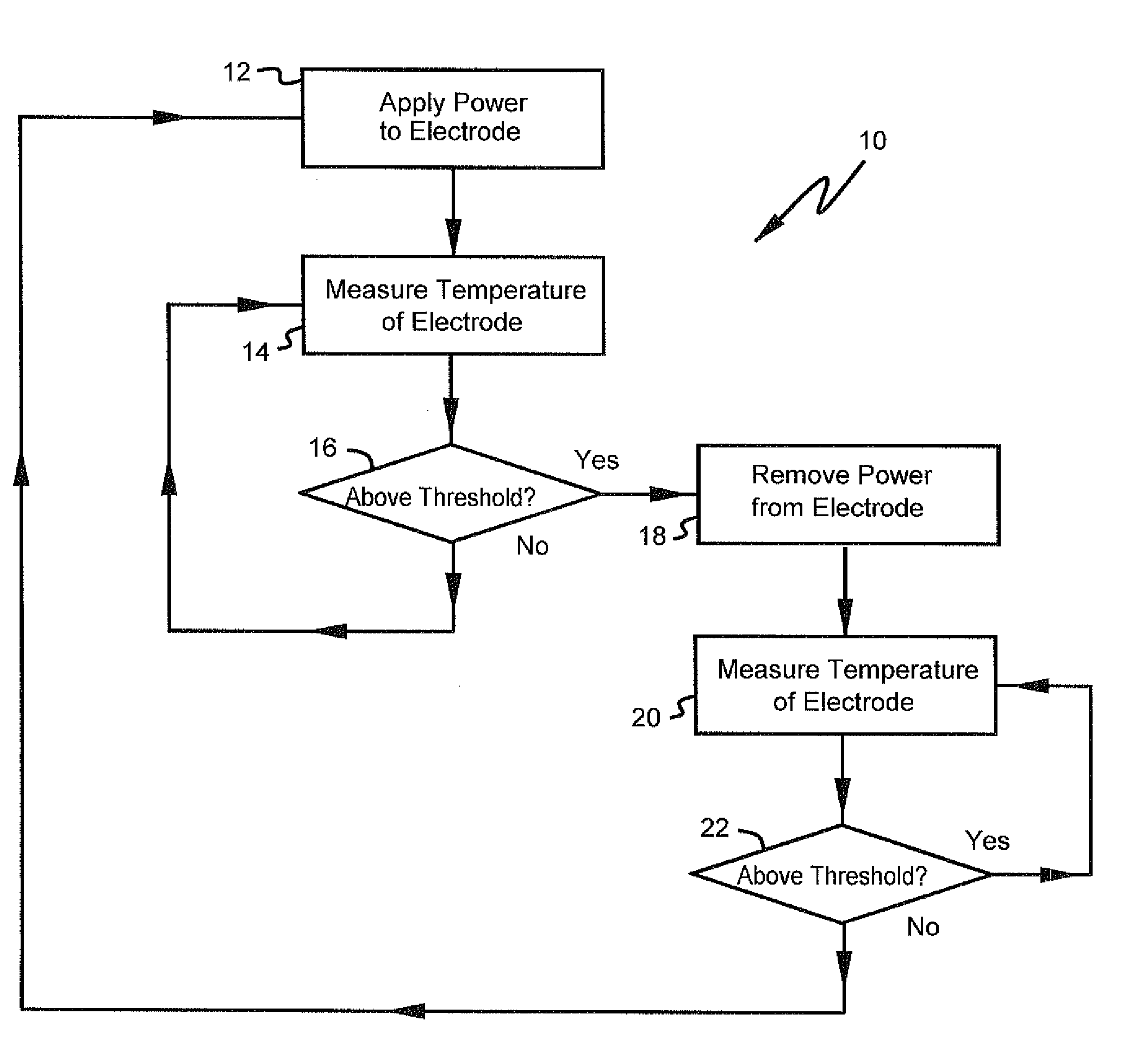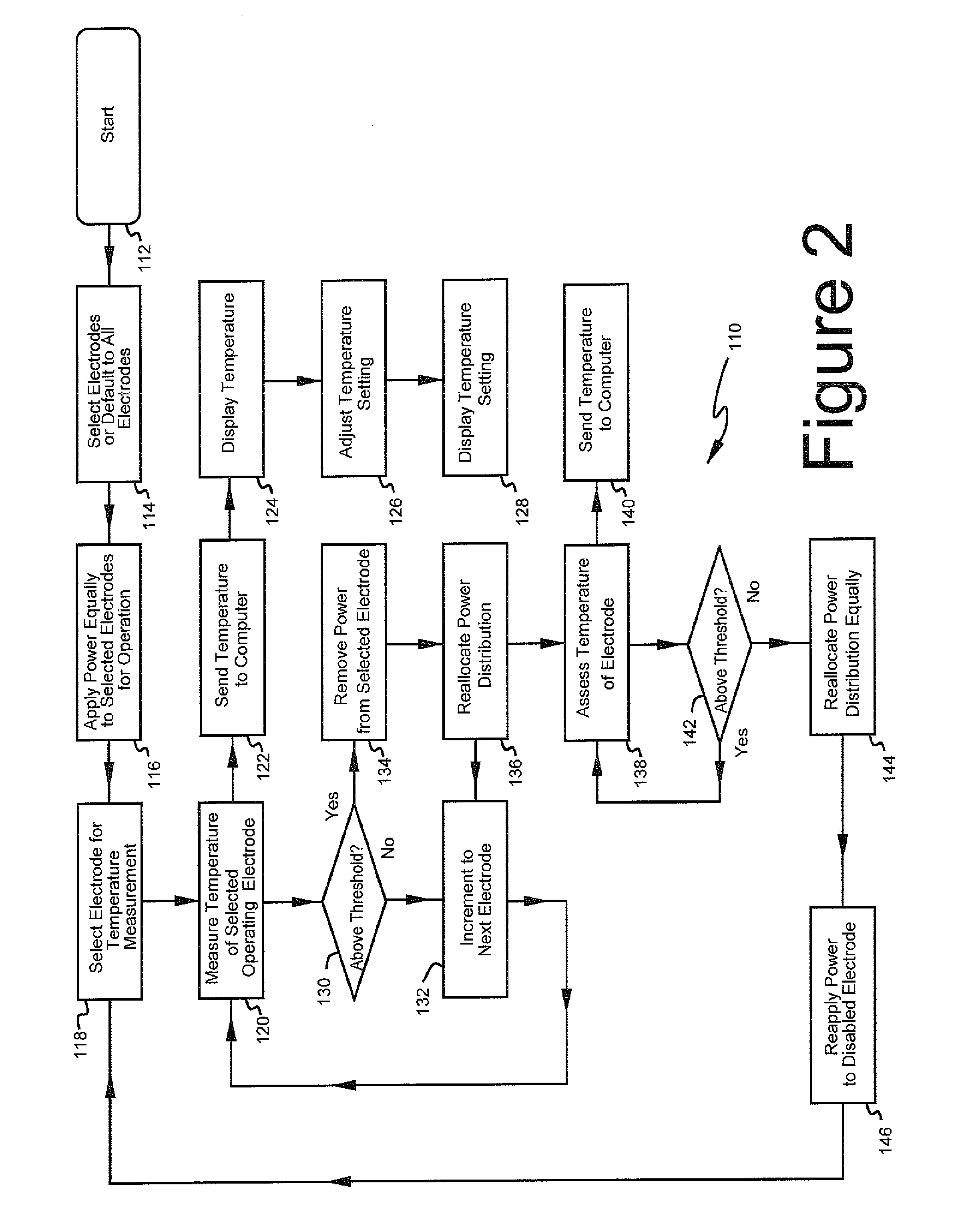Impedance responsive ablation RF driving for moderating return electrode temperature
a technology of responsive ablation and driving force, applied in the direction of medical science, surgical instrument details, surgery, etc., can solve the problems of attendant discomfort and, potentially, injury, and achieve the effect of reducing the likelihood of return electrode overheating
- Summary
- Abstract
- Description
- Claims
- Application Information
AI Technical Summary
Benefits of technology
Problems solved by technology
Method used
Image
Examples
Embodiment Construction
[0040]Typically, ablation is performed using a device comprising an elongated handle which may be gripped by the surgeon. Extending from the handle is a thin elongated, often pointed sometimes stiff but somewhat flexible catheter which may be used to puncture the skin and enter the region where the particular growth or lesion to be removed is located.
[0041]The above device is of particular value with respect to the ablation of uterine fibroids. Alternatively, a device with a rounded tip may be used to implement ablation in parts of the body that allow entrance without piercing, for example the urethra. Other areas of application include liver lesions, prostate cancer, and so forth. The present invention applies to all of the above and similar devices.
[0042]In such devices a plurality of stylets extends from the pointed tip and may be deployed into a growth to be removed. For example, the tip, under the guidance of ultrasound imaging may be advanced into a liver lesion. Stylets exten...
PUM
 Login to View More
Login to View More Abstract
Description
Claims
Application Information
 Login to View More
Login to View More - R&D
- Intellectual Property
- Life Sciences
- Materials
- Tech Scout
- Unparalleled Data Quality
- Higher Quality Content
- 60% Fewer Hallucinations
Browse by: Latest US Patents, China's latest patents, Technical Efficacy Thesaurus, Application Domain, Technology Topic, Popular Technical Reports.
© 2025 PatSnap. All rights reserved.Legal|Privacy policy|Modern Slavery Act Transparency Statement|Sitemap|About US| Contact US: help@patsnap.com



